Simon Jenkins: Can I start by asking what is it about cities that people once so disliked – and what it is they now so appreciate?
Edward Glaeser: I think the reality of urban life throughout most of history is that people didn’t come to cities for their pleasure. It wasn’t a particularly pleasant life in so many ways: a boy born in New York City in 1900 had seven years’ less life expectancy than one born elsewhere in the United States, and it was about the same gap between London and the rest of Elizabethan England.
The demons that came with density were more obvious back then: the cholera epidemic; the fact that just as cities sped the flow of ideas, so they sped the flow of disease, too; the crime that was so associated with Victorian London. And, of course, cities built on heavy industry had all the downsides of pollution, waste and filth.
It’s remarkable, perhaps, that they attracted as many people as they did, but I think that reflects the economic strength of these areas to lure people in from rural penury. There are these wonderful paintings by John Martin, a British artist who was very popular in the 1830s. We have one in Boston which is this horrifying picture of one of the plagues of Egypt – but there’s a cityscape within it that’s both wondrous and terrifying at the same time. I think of it as capturing both the fascination and horror of the Victorian urban age.

After that, things started to change – and most importantly, cities became safer. There’s an old line among urbanists that the most important job of any city government is supplying clean water – and American cities were spending as much on clean water at the start of the 20th century as the federal government spent on everything else, bar the Post Office and the army. It was a massive undertaking but, gradually, the downsides of dense living were mitigated in these cities. Crime rates also tended to decline in the US between the 1930s and the 1960s.
At the same time, however, you had this massive move towards car-orientated living – and the car pulled people away from city centres. Gradually our cities de-industrialised and the population suburbanised – in America, you had this big move away from public transit-orientated living in the old, dense cities of the industrial Rust Belt, to the sprawling, car- and climate-friendly cities of the Sun Belt. This was the future, it seemed. The older, denser cities were dead.
Some cities felt like they were out of control – it was the world of Mr Sammler’s Planet, Saul Bellow’s great novel. The crime problems were enormous, riots tore apart many American cities – and the downside of fiscal decentralisation was that, in the 70s, you had cities like New York on the edge of bankruptcy.

SJ: Throughout that time, our big cities were a source of mystery – “original sin”, almost. The planning profession, basically, planned for “non-cities” – to them, a city was just a place where you had a ring road, then another ring road. You could rebuild them, but only to create more office space.
London’s population was going down and down; the same applied to Liverpool - its central area got down to something like 400 residents. Our cities were collapsing, and the prevailing view was that you couldn’t buck the system, so you had to let them collapse.
But then, somehow, even amid the urban crime and everything else, cities became desirable. They started attracting young people. But I still can’t pin down exactly what the turning point was. They weren’t exactly fashionable, but they were feisty, they were sexy – and I think it related to the fabric of the city. Because in cities like London, Liverpool and Manchester, the areas that were magnets were invariably old: the corners of the city that people thought had had it. Somehow or other, the “alternative” economy craved these places.
EG: I’ve thought a lot about the development arcs of New York and London, and I think they are slightly different. The first thing to say is that – whether we’re talking about the New York of Al Jolson a century ago, or of the abstract expressionists in the 1940s, or of Mayor John Lindsay’s “Fun City” in the 1960s – New York has always had a reputation for fun and excitement.
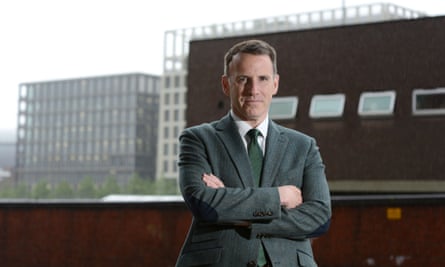
I also think New York did remarkably well in the 1950s and early 1960s, surviving the de-urbanisation/suburbanisation trend far better than our mono-industrial Rust Belt cities. But then, in the 1960s, the garment trade – New York’s major industry – got completely pummelled by globalisation. The crime wave got out of control, fiscal practices under Mayor Lindsay and his successor, Abe Beame, were deeply problematic, and the city endured a 10-year slide from 1965 to 1975 that was truly awful.
It took until the 80s for the city to finally make a comeback economically, thanks to Wall Street. And I think the key [to the city’s recovery] was making it rich enough to be able to pay for safe streets. Only then could the cultural features of New York be strongly in evidence again.
SJ: But there was something about the nexus of Midtown, Greenwich Village, moving south ... This alternative economic activity, which often looked like a freak show – it attracted young people in. They weren’t rich, but it brought old buildings back into use and made them acceptable parts of the urban fabric. Young people and poorer people could find jobs there, and spaces to live in. What fascinates me is that New York and other cities turned “alternatively” rather than obviously – and they turned because of the physical character of these cities.
EG: I do think there’s a constant battle between the genius that clusters so naturally in dense urban streets, and the downsides of density. In New York in the 1970s, we felt the natural genius of dense living was heavily surpressed by a failure to mitigate crime and danger. But when that was alleviated …
SJ: How was that done?
EG: Nobody agrees! Although one unarguable factor was that they put a lot more cops on the job; they spent more on policing. But was the policing in some way smarter? I’ve never seen anything compelling to show me that. We do know the city authorities spent a lot of money, and we also know that, tragically, they locked up a lot of young people – so the social costs of this safety ended up being enormously high. But policing was certainly priority number one for successive administrations, and that was important.
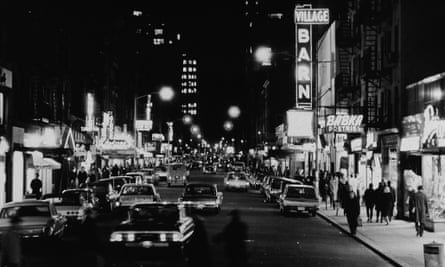
SJ: It meant that renovating old buildings, and building new ones, in the inner-cities now made sense; middle-class people would come and live there – although, in my experience, it still took a very long time in the rougher parts of London.
But hang on – at the same time, there was this countervailing theory that “the city was no longer needed”. You could go and live in the boondocks, and as long as you had a machine, you could make money. How did cities survive that?
EG: I think there are two reasons: first, the people who made that claim vastly underestimated the importance of face-to-face contact in work. What globalisation and new technologies do is radically increase the returns to being smart. We are a social species that gets smarter by being around other smart people, and that’s why cities thrive. That’s why Wall Street traders still have trading floors where incredibly wealthy people are all willing to sit right on top of each other.
Also, as cities became safer, their ability to become places of pleasure as well as productivity grew more obvious. We see this statistically: in the 1970s, workers in big cities were paid a real-wage premium to stay there. If you were in New York – and this chimes well with what I remember from my own youth in the city – the average worker thought it was a pain in the neck to live in this fairly dangerous city. People like my mother: a middle-aged woman with kids, trying to get by in life – you needed to pay her a premium to put up with it.
Now that’s no longer the case. By the 1990s, it was clear that cities were providing amenities and attractions that plenty of people liked. And the more there is a seamless connection between your work and outside life, the more natural it is to live in an urban area. If everyone travels in from some other place then goes away again, it’s much harder to have that seamless connection.

SJ: It’s also noticeable what jobs graduates are prepared to do in cities now. Getting on for half London’s population is made up of graduates, and it’s something similar in big American cities – but there aren’t nearly enough of what we used to call “graduate-quality jobs” available. So they find things to do that make the city acceptable to them: for example, they cook – which would have been unthinkable when I was young. And the same applies to a vast range of jobs: interior decorating (they used to call it painting), gardening ... Now it’s all part of the experience of living in a city.
EG: And in a big city, they can find a buyer for all those niche services. Part of the magic of cities is that they enable us to specialise. Whatever your cayenne-peppers-fusion-wasabi-shortbread is, there will be someone in London dying for that product. In this sense, cities are the hand-maidens of our creativity.
SJ: My son lives in San Francisco and, when we go out on a Sunday morning, the place is a market – a souk in every sense of the word. You can buy everything from a quiche to an app, and it’s all being run by bright young graduates. This, to me, is “the new city” – but it creates new problems, too.
As cities become attractive places to live, property prices spiral – and the people who run cities have got to be very careful. Demand for property will always exceed supply in a successful city. But I worry when people say, because there’s demand, because prices are rising, therefore we must create more supply, irrespective of the original qualities that I believe drew people to the city in the first place. That, to me, is dangerous.
I fought against the Canary Wharf development in London’s Docklands, for example – it was such a wonderful area, full of film-makers and artists, and they just flattened it to build those huge offices. Now, I accept the offices have worked – but I did write a piece predicting there would be ivy growing over them one day.
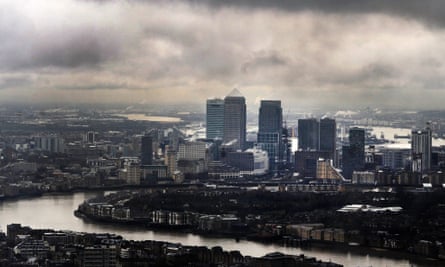
EG: Personally, I believe there are always huge costs to saying “no” to people who want to create space for new families that want to live in the city; who want to make the city more affordable. There are always costs – I believe that very, very strongly – but, sure, there are also benefits to saying “no” at certain times. Incidentally, my father was an architectural historian – in London, he was involved in the 1960s campaign to allow a Mies van der Rohe building to be built in Mansion House Square.
SJ: I fought that plan, too ... I think its developer, Peter Polumbo, meant well – but it was a horrible building!
EG: One of the beauties of being an economist, rather than an architect, is I have no standing on aesthetic issues. But the key is surely to figure out ways in which the traditional character of the city can be balanced with the need to provide more space. Take Canary Wharf: I’m sure there was a loss from there – but they did manage to deliver a lot of extra office space without disturbing much of the traditional city. And that’s what you want to do: figure out how to allow density in ways that aren’t going to rip apart so much of what is magical about a city like London.
SJ: Defining precisely what it is that’s “magical” is important – and often just not done. If I go back to the successful conservation campaigns in London, such as Covent Garden, Mayfair and Piccadilly Circus – there was a huge battle over the plan to demolish Piccadilly Circus – all of these schemes would now be regarded as absolutely unthinkable.
Yet the people we’re fighting today are repeating exactly the same old lines about other places in London: “Oh, you can’t save Smithfield Market, you can’t save Nine Elms, you can’t save the Strand – you can’t stand in the way of progress.” Well, the whole of west London, the whole of central Westminster, would have been flattened by that argument.
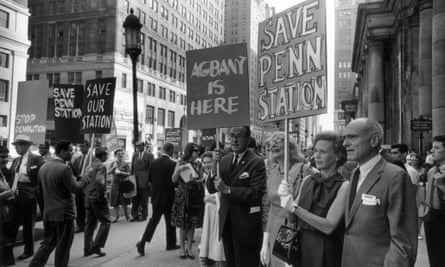
EG: “You can’t stand in the way of progress” is indeed a really crappy argument – there are times when you can, and you must. But let’s go back to our friend Jane Jacobs, who I actually admire enormously. She was certainly right that Greenwich Village was a magical space, but think of her chapter in Death and Life about how cities need old buildings because they need cheap space ... Well, now those townhouses in Greenwich Village start at $8m. Which shows there are real dangers in shutting off the supply valve everywhere.
SJ: I’ve got no problem in saying two things: first, you’ve got to allow densities to increase, even in some of London’s protected areas. I walk and cycle around the city all the time, and you come through mews after mews – all two-storey properties. To put one more storey on each mews terrace would do no damage, in my view, to the character or visual appeal of the city – and it would add 30% to its density.
EG: Yes – but the number of actual new housing units provided would be small. I think that’s the problem with any incrementalist answer. The advantage with places like Canary Wharf or La Defense, in Paris, is that going really far “up” means you can provide a lot of stuff on a very narrow footprint.

It’s not that I am entirely anti-regulation – I think cities need some form of land-use regulations. But their precise nature depends upon what is being protected, and the nature of the city in question.
London occupies this interesting and particularly difficult middle ground between, say, New York and Paris. In New York, density is in the city’s bones. I think the Landmarks Preservation Commission has preserved plenty of postwar stuff that is completely undistinguished. In my view, nothing would be lost in New York’s DNA by replacing 10-storey postwar buildings with 40-storey buildings – I will defend that to my grave and I will give you numbers on it as well. This is not a place where you ever had views of St Paul’s or anything like that. They are undistinguished tall buildings; why not let the developers build them higher if they want to?
London, though, is a mix: it’s not quite as chaotic as New York, but it has lots of modern buildings, partly because of the Blitz. And then it has its commonalities with central-city Paris as well; certainly, there are parts of London that are at least as beautiful as anything there. Which makes this trade-off particularly difficult.
SJ: My problem with your argument is that you lend succour to what I call “the other side” – the non-planning side. For the last 10 years, the London mayor’s office has been a focus of all “let-it-rip” building policies. A developer comes along who covets a site, but he doesn’t give a damn. Sight-lines are immaterial; it’s basically just a money deal. He offers Section 106, as we call it, he offers various goods. And the mayor says, “Well, I’m a modern person – I’ve got to let the city breathe, I’ve got to do things with the city. And prosperous cities have tall buildings, so fine, go ahead.”
Now London is pepper-potted with towers, really at random across the city, and there’s no aesthetic plan for it at all. The only aesthetic plan is “keep what was there”; there’s no “let’s build beautiful” or “let’s build at a certain density”. There are no zoning regulations, and no plot ratios. Anything goes if you can whack it through ad hoc. And I believe very few Londoners like it this way.
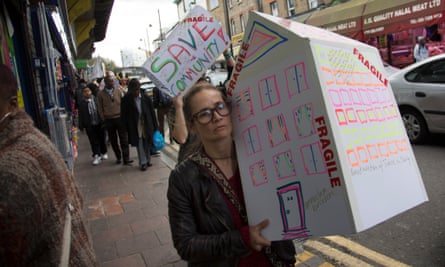
EG: Well, I certainly stand with those who favour process over random projects. I would just prefer a system where we think things out ahead of time, rather than trying to micro-manage. Listen, I’m an American with a PhD from the University of Chicago – planning is not in my DNA! But I certainly do believe cities need some form of planning, and they need some form of regulation as well.
We need a clear process that sets out a range of things that are doable, with price tags attached. For example, I would have fees that must be paid for building to certain levels; those fees would be clearly delineated ex-ante. We should also have a clear set of rules about the aesthetic stuff; again, as an economist I have no standing on that, but clearly it also matters.
I actually believe that London could have built more rather than less over the last 10 years, and I certainly believe Boston, where I live now, could have built more. But I would much rather that comes out of a coherent plan than some random process.
SJ: As an economist, you say you don’t have anything to do with aesthetics, you leave that to someone else – but that’s not good enough for me. The trouble is, your economist’s perception of it is so crushingly plausible and rational, it sweeps aside the less-influential conservationists!
EG: When it comes to public policy decisions, what I believe in, for every city, is cost-benefit analysis. I believe that about high-speed rail, and I believe that about land-use planning. The ultimate question is: whatever our argument is for saying “no”, can we plausibly put down numbers that tell us that, in this neighbourhood, the benefits of preventing a development are high enough that we don’t want it to happen?
Take views in cities, for example. It’s not impossible to put numbers on their value. Indeed, I feel very confident that the value of a New York view is typically about 25% of the value of the apartment itself. And the reason I feel so confident about that is that I compare condominiums that are identical on the third and 20th floors of a building, and the latter will typically sell for a 25% premium.
Now, if you were fancier, you could do this to evaluate all sorts of stuff. But it’s not that I believe those numbers should be dictatorial – we need to have an open discussion. It’s just that we must be able to tie that discussion to some sort of empirical reality.
Professor Edward Glaeser was a guest speaker in the Centre for Cities series City Horizons. Listen to his lecture on ‘comeback cities’ here.

